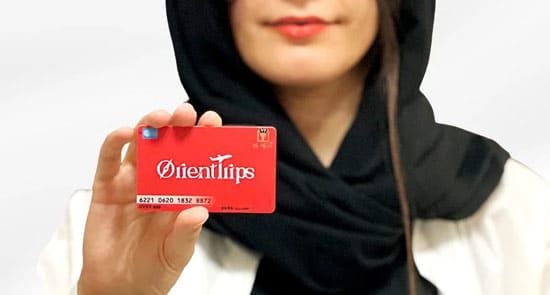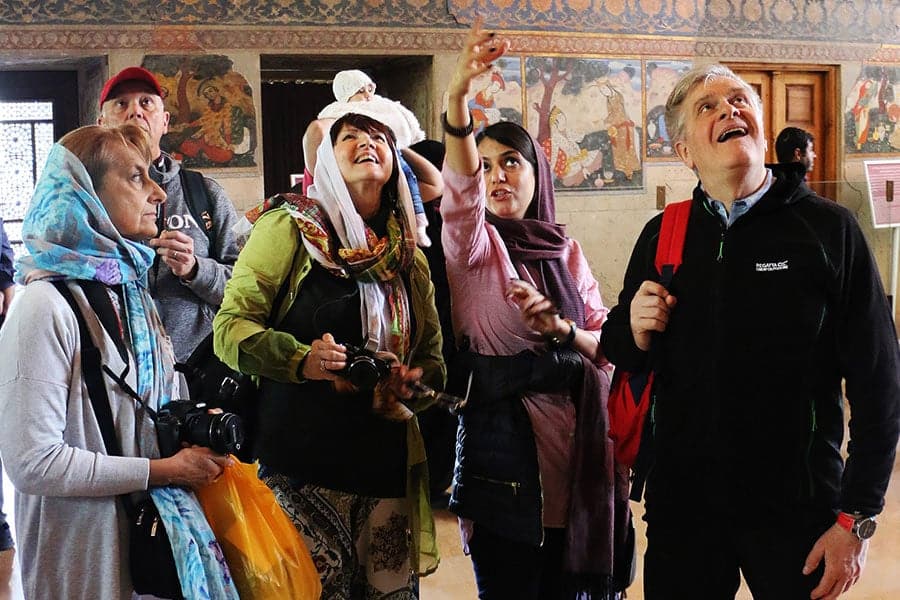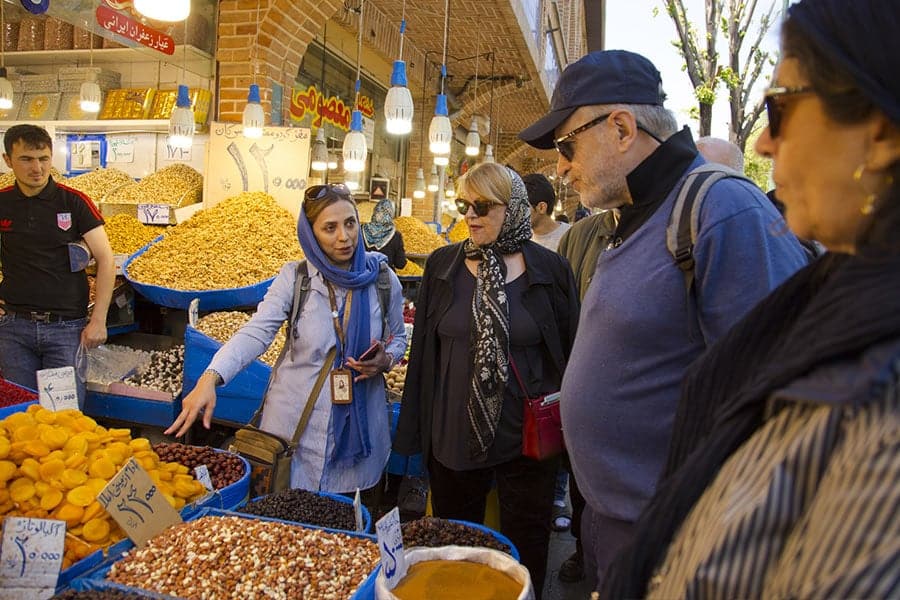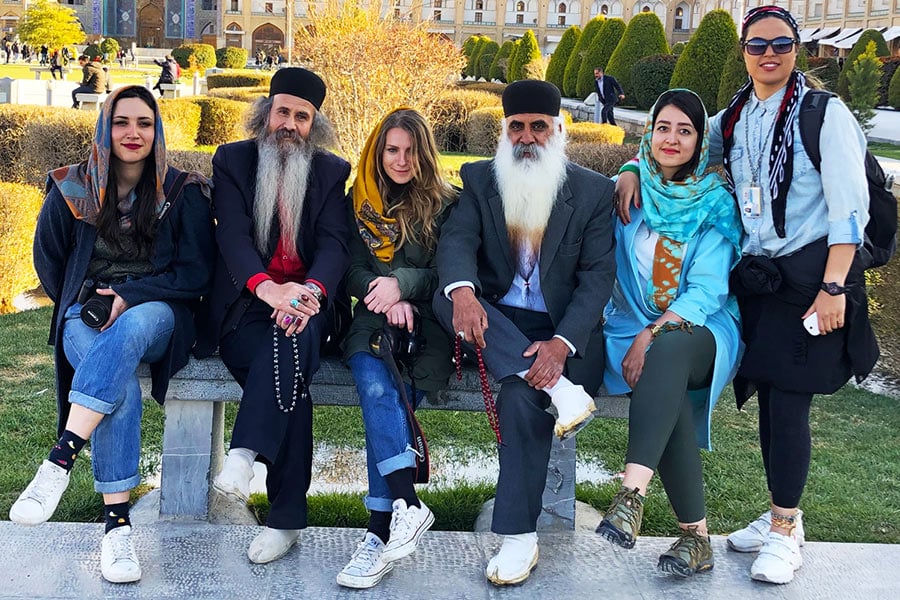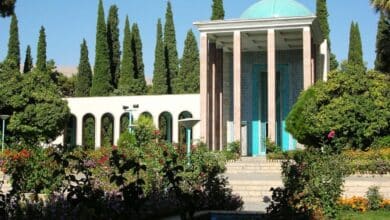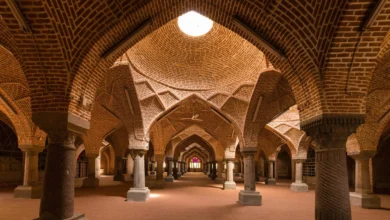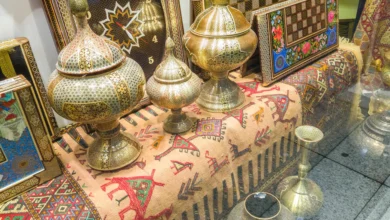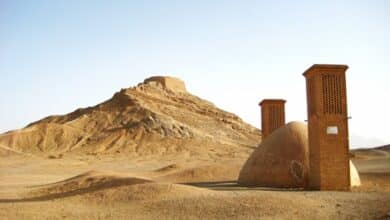Chaharshanbe Suri: A Night of Fire and Celebration
Iran's Fiery Chaharshanbe Suri: Embrace the Ancient Traditions

One of the important national traditions and events in Iran is called Chaharshanbe Suri, which takes place from the sunset of the last Tuesday of the year until the early hours of the last Wednesday of the year.
This ritual has historical roots dating back to the Zoroastrian era and is performed collectively with specific customs and traditions that we will mention below.
Contents
Introduction to the Customs of Chaharshanbe Suri Celebration
On this magnificent night, various fascinating rituals are held, such as Jumping over the fire.
Shawl-Dropping, fortune-telling, Pottery-breaking, spoon banging, reciting Shahnameh (the Book of Kings) and eating nuts. Let’s briefly introduce each of them.
Jumping Over the Fire
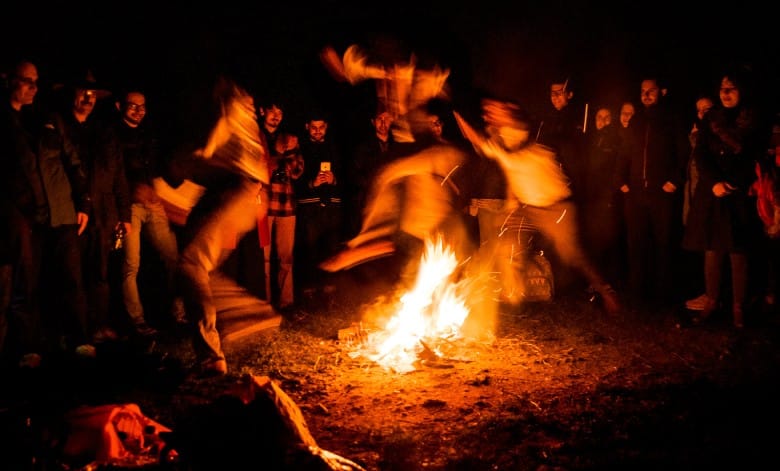
One of the oldest and most beautiful traditions in Chaharshanbe Suri is the lighting of bonfires. In this ceremony, dry bushes are gathered by families, and as soon as the night falls, these bonfires are ignited, and people jump over the flames.
The reason for jumping over the fire has several different interpretations. Some believe that this ritual is derived from the story of Siavash (one of the classic Iranian tales in Shahnameh by Ferdowsi, where Siavash proves his innocence by jumping over the fire). Others believe that by passing through the fire, people will be protected from illnesses, which is why the poem “My yellowness is from you, your redness is from me” is recited during this ceremony. Afterward, the ashes from the fire are scattered behind the houses to keep diseases away from the household, and instead, good health is wished upon them.
Reciting Shahnameh
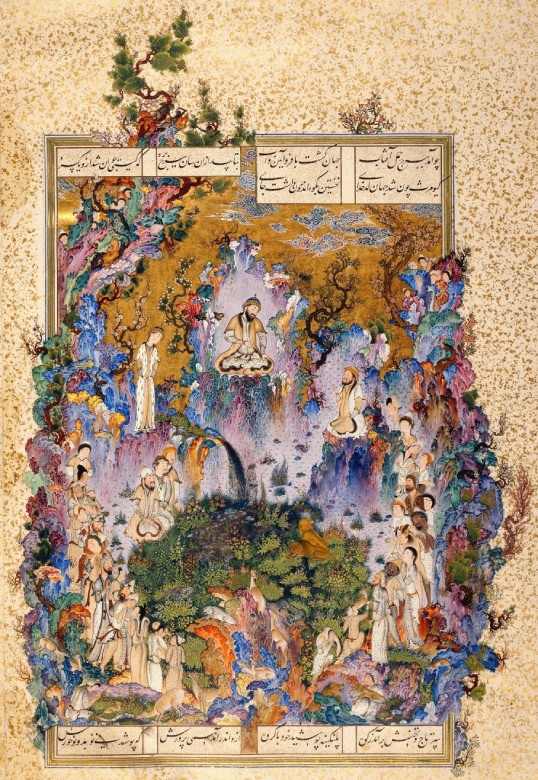
Another ceremony of this night is the recitation of Shahnameh. People gather around the fire, and the elders of the family recite this book. Those who are skilled in playing musical instruments may also play music to celebrate the approaching spring.
Fortune-Telling with a Jug
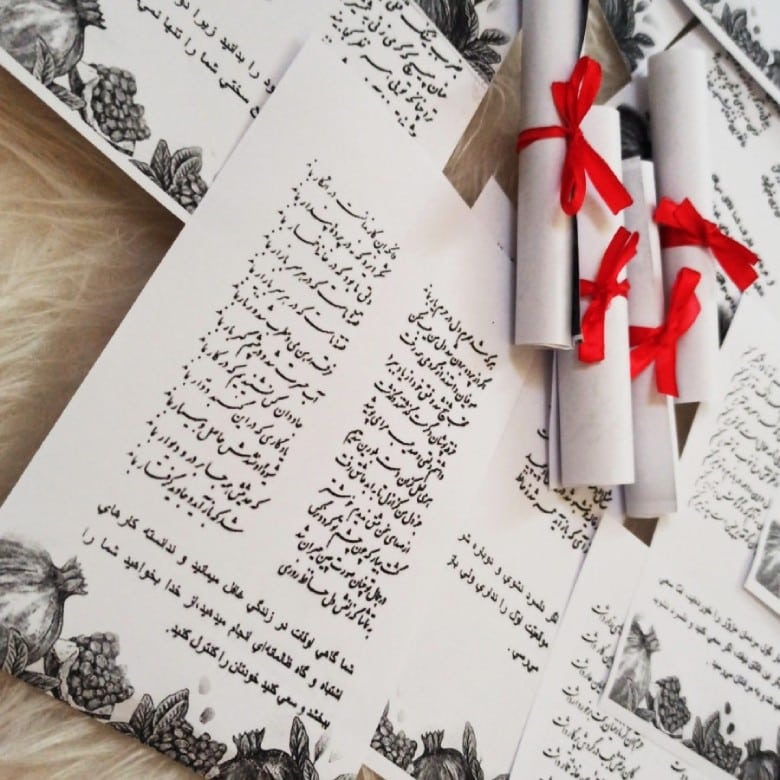
In this custom, the family members place a jug among themselves and write a few verses of Hafez‘s poetry (an ancient Iranian poet whose verses are used for fortune-telling). They put these written verses inside the pitcher. In addition to the poetry, each person also puts symbolic objects that belong to them inside the pitchers. Then, a young unmarried girl brings a poem and one of the symbolic objects separately, and in this way, the poem becomes associated with the person who owns the object, and its interpretation is for them.
Pottery-Breaking
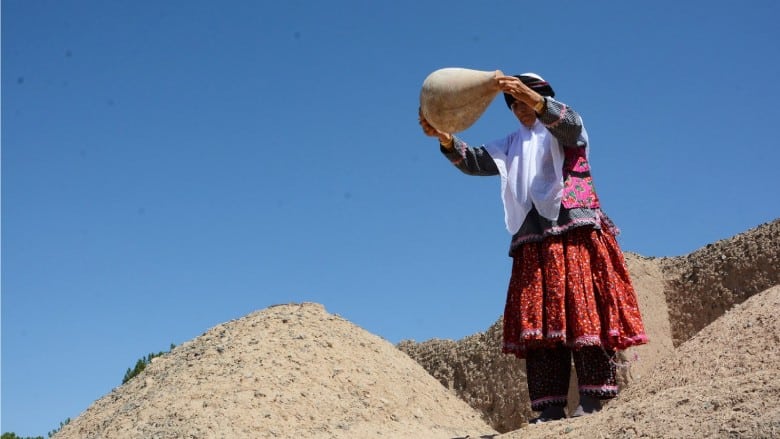
This custom originated from a belief in ancient times that breaking a pottery eliminates misfortune and calamities. This ceremony is performed by one of the household members going up to the rooftop or a raised platform and then throwing a water-filled pottery onto the ground to break it and scatter its water. The presence of water inside the jug is also a symbol of enlightenment. It’s interesting to note that different things may be put inside the pitchers in different cities. For example, in Tehran, coins are used, in Khorasan, coins are used, along with some coal and salt, and in Arak and Ashatian, barley grains are put inside the pitchers.
Spoon Banging
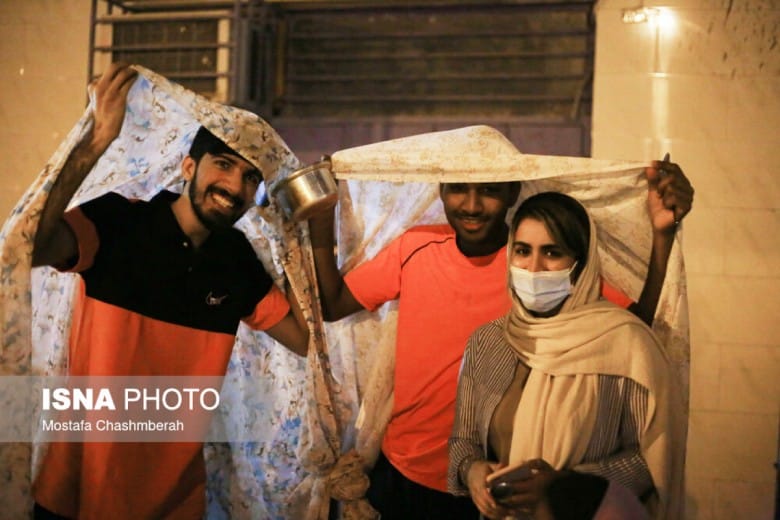
In this interesting tradition, young girls and boys carry a spoon and a bowl with them while covering their heads with veil to remain unrecognized. They visit their neighbors’ houses, and then they hit their bowls with the spoon, signaling their neighbors to fill their bowls with sweets, chocolates, nuts, raisins, or money. It’s interesting to note that this ritual originated from a belief in ancient times that spirits return among the living at the end of the year to receive offerings. Some people also believe that the food collected in the bowls is given to the sick for healing and well-being.
Shawl-Dropping
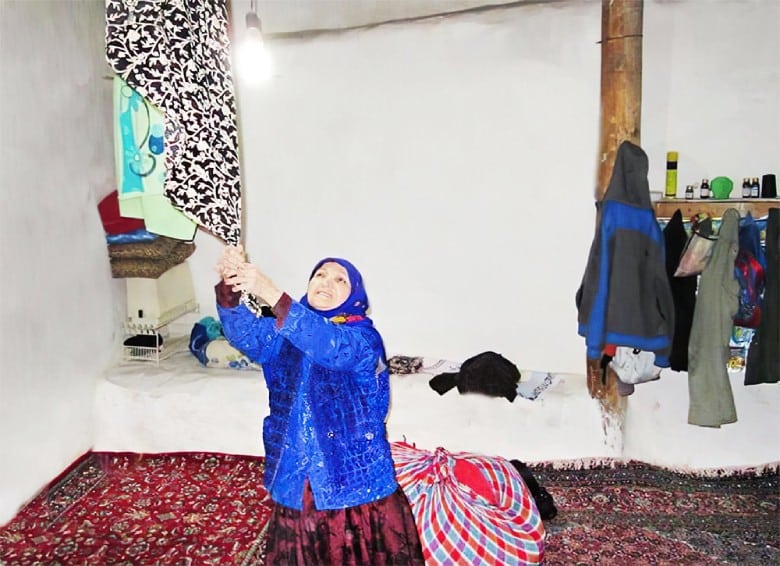
Another custom that is still practiced in some cities like Hamedan and Zanjan is the shawl Dropping ceremony. Young people create a long rope by tying several silk and satin scarves together and throw it down from a ladder, chimney, or rooftop. The homeowner, who is waiting for the shawl, places a gift in one corner of it, ties a knot, and gently shakes it to let the owner of the shawl know and pull it up. This gift can be bread, sweets, pomegranates, nuts, coins or socks. It’s interesting to know that in some areas, this ceremony is indirectly used for marriage proposals, where the young man ties a knot in the corner of the shawl. If the homeowner agrees, they untie the knot, and if not, they place a gift like sweets and nuts in the shawl.
Special Foods for Chaharshanbe Suri

One of the most important and delicious foods of this night is a variety of nuts and dried fruits such as pumpkin seeds, pistachios, watermelon seeds, sunflower seeds, wheat, hazelnuts, almonds and chickpeas. These foods are served in this night to symbolically remove animosity and envy and replace them with kindness and affection.
In order to satisfy their needs, some people used to distribute the seven-brained nuts, which are known as problem-solving nuts and include pistachios, hazelnuts, almonds, dried berries, dates, chickpeas, and raisins.
Some people also distribute the “Seven Nut Mix” as a gesture for fulfilling their own wishes. The Seven Nut Mix is known as problem-solving nuts and includes pistachios, almonds, walnuts, dried mulberries, dates, chickpeas, and raisins.
t’s worth mentioning that there are also specific dishes that are traditionally cooked on this night. For example, a soup called “Ash-e Bimar” (sick person’s soup) is prepared and first served to the sick (as a means to ward off illness from the individual) and then distributed among neighbors and the poor
In some cities like Khorasan, there is a special dish called “Chahar-Rang Polo” (Four-Color Rice) consisting of four types of rice dishes: noodle rice, lentil rice, barberry rice, and mung bean rice.
Wrapping up
The Chaharshanbe Suri ceremony can be a memorable night for Iranians and even foreign tourists. Those who are interested in learning more about Iranian customs and traditions can visit Iran in late March to participate not only in the Chaharshanbe Suri festival but also in the Nowruz celebrations and have a delightful experience.
FAQs
-
When does the Chaharshanbe Suri ceremony take place?
The Chaharshanbe Suri ceremony takes place from the sunset of the last Tuesday of the year until the early hours of the last Wednesday of the year.
-
What are some of the rituals performed during the Chaharshanbe Suri celebration?
This magnificent night involves interesting rituals such as Jumping over the fire
Shawl–Dropping, fortune-telling, Pottery–breaking, spoon banging, reciting Shahnameh (the Book of Kings) and eating nuts. -
What are some traditional foods eaten during Chaharshanbe Suri?
It is customary to eat various nuts such as pumpkin seeds, pistachios, watermelon seeds, sunflower seeds, wheat, hazelnuts, almonds and chickpeas during Chaharshanbe Suri. Additionally, dishes like “Ash-e Bimar” (sick person’s soup) and “Chahar-Rang Polo” (Four-Color Rice) are also prepared for this celebration.
IRAN GROUP TOURS
Join our Iran tours, connecting you with like-minded travelers and streamlining the organization process.
